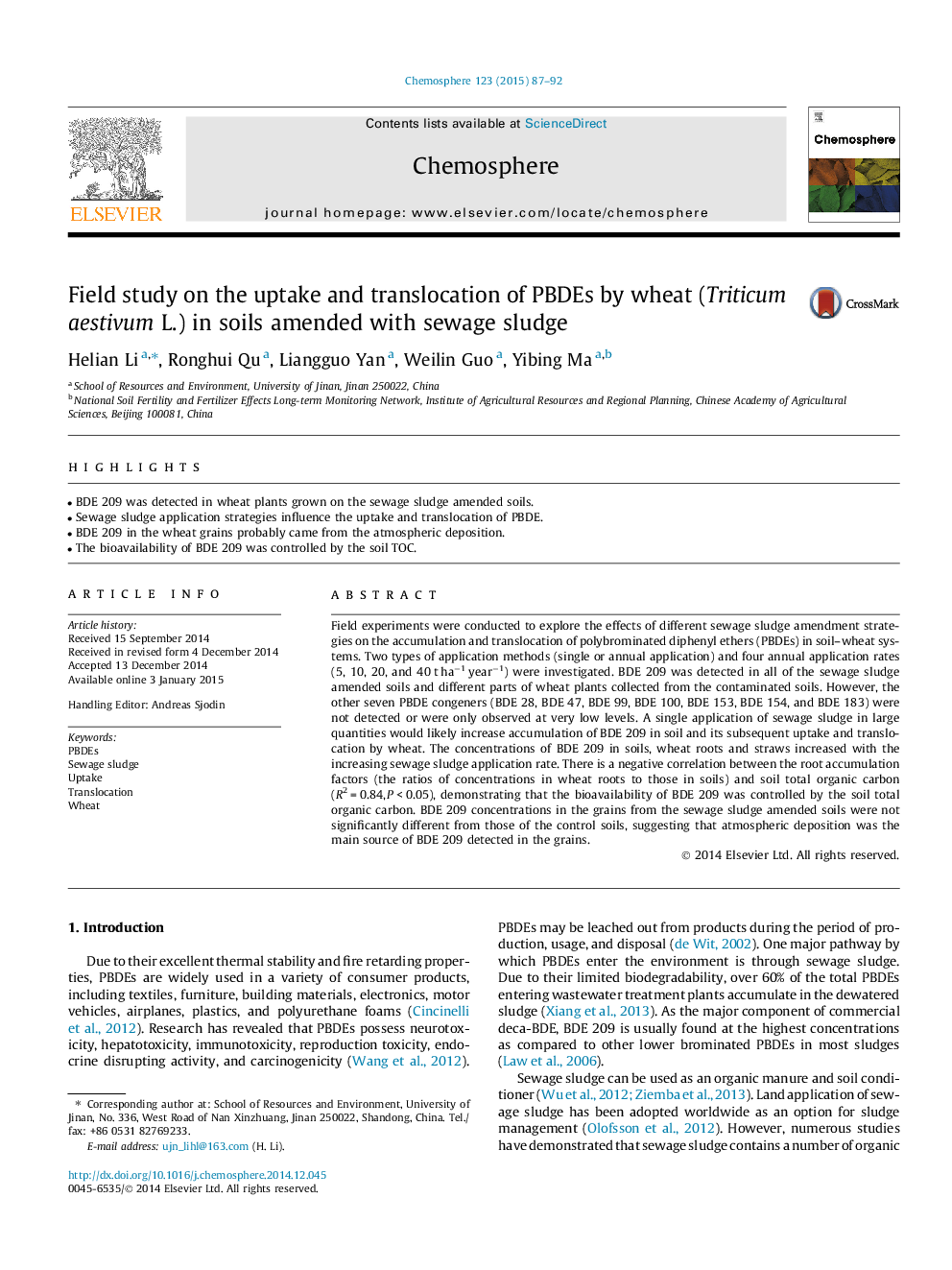| کد مقاله | کد نشریه | سال انتشار | مقاله انگلیسی | نسخه تمام متن |
|---|---|---|---|---|
| 4408586 | 1618848 | 2015 | 6 صفحه PDF | دانلود رایگان |

• BDE 209 was detected in wheat plants grown on the sewage sludge amended soils.
• Sewage sludge application strategies influence the uptake and translocation of PBDE.
• BDE 209 in the wheat grains probably came from the atmospheric deposition.
• The bioavailability of BDE 209 was controlled by the soil TOC.
Field experiments were conducted to explore the effects of different sewage sludge amendment strategies on the accumulation and translocation of polybrominated diphenyl ethers (PBDEs) in soil–wheat systems. Two types of application methods (single or annual application) and four annual application rates (5, 10, 20, and 40 t ha−1 year−1) were investigated. BDE 209 was detected in all of the sewage sludge amended soils and different parts of wheat plants collected from the contaminated soils. However, the other seven PBDE congeners (BDE 28, BDE 47, BDE 99, BDE 100, BDE 153, BDE 154, and BDE 183) were not detected or were only observed at very low levels. A single application of sewage sludge in large quantities would likely increase accumulation of BDE 209 in soil and its subsequent uptake and translocation by wheat. The concentrations of BDE 209 in soils, wheat roots and straws increased with the increasing sewage sludge application rate. There is a negative correlation between the root accumulation factors (the ratios of concentrations in wheat roots to those in soils) and soil total organic carbon (R2 = 0.84, P < 0.05), demonstrating that the bioavailability of BDE 209 was controlled by the soil total organic carbon. BDE 209 concentrations in the grains from the sewage sludge amended soils were not significantly different from those of the control soils, suggesting that atmospheric deposition was the main source of BDE 209 detected in the grains.
Journal: Chemosphere - Volume 123, March 2015, Pages 87–92